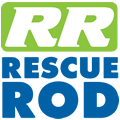Root growth into sewer pipes
In urban areas, tree roots may have a hard time finding good sources of nutrients. Limited green space, the removal of leaves and other organic debris from lawns, and the draining away of surface water by sewer systems cause roots to seek water and nutrition at greater depths. Roots thrive in sewer pipes. The sewage system is a perfect environment: well-ventilated, oxygen-rich, and full with water and nutrients. Microscopic openings in sewer systems can permit hair-like root structures to penetrate pipe joints, cracks, connections, or any other opening. A secondary root may grow alongside a sewer pipe for many feet, exploiting each opportunity to penetrate into the system.
Sewer line can also be rehabilitated by pipe re-lining. One method, “slip-lining,” involves pulling a seamless pipe through the existing sewer and digging only where building laterals require connecting. Another method, “cured-in-place” lining, involves inflating and curing a sock or plastic tube that conforms to the shape of the pipe.
Then robotic devices are used to cut building connections into the liner. Pipe re-lining can address root infiltration problems and correct some structural defects and is less disruptive than pipe replacement. It also can provide long-term control against root regrowth through joints.
Mechanical control is the most important and common method of control. It involves the use of tools or other devices that cut and remove roots from sewers. Its main advantage is that it is the only method for relieving a root blockage. Chemicals are ineffective and dangerous when used in plugged or surcharging sewers. Sewer blockage/s is an emergency situation and Rescue Rod do have some type of mechanical control device for correcting such problems. The main disadvantage of mechanical control is that it provides no residual control or long-term effectiveness. Root masses grow back heavier each time they are cut. Tap roots continue to grow in diameter and, in time, place stress on sewer pipe. Good results are obtained if the roots are cut flush with the joints, however, offset joints and cut-in laterals can prevent the use of full-gauge cleaning tools.
Drill machines, also called coil rodders, are hand or power-driven flexible steel cables that turn augers or blades within the sewer. They are most often used by plumbers to relieve blockages in house-lines or other small diameter sewers, and rarely in main-line sewers. Rodding machines are flexible steel rods with rotating blade cutters, augers, or corkscrews. Rodding machines are most effective in small diameter sewers, up to 160mm
Jetters, also known as Hp jetting/ jet rodders, jet trucks, and hydraulic sewer cleaners, consist of a high pressure water pump, water tank, hose reel, and ½” to 1” sewer cleaning hose. Water shooting through orifices in the rear of the nozzle propels the hose through the sewer, blasting it through obstructions. As the hose and nozzle are retrieved, debris is hydraulically flushed back to the insertion manhole for removal. Jetters can also be equipped with water-propelled spinning root cutters.

 WhatsApp us
WhatsApp us